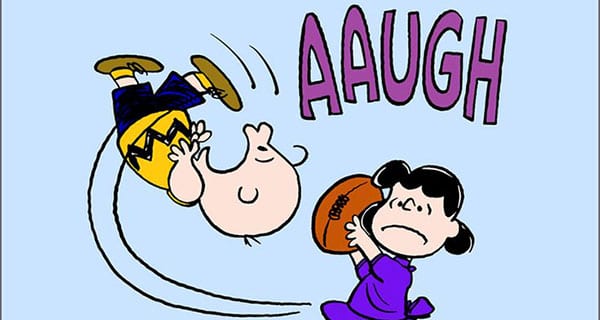 Now that the nation is deep into the seasonal gridiron grind, it’s time to talk money, TV and some serious Canadian angst.
Now that the nation is deep into the seasonal gridiron grind, it’s time to talk money, TV and some serious Canadian angst.
No, this isn’t about why the Canadian Football League can’t draw flies in Toronto. This is about the ads, the rights and all the money that makes football a fantasy land for fans and turns muscled-up behemoths and speedsters into millionaires. Specifically, the cost of broadcast rights to the National Football League’s championship game – the Super Bowl – and the ads that go with it: dazzling theatrical product pitches that cost US$10 million to $12 million to make and then get on the air for a mere $5 million for each 30-second spot. Yes, the ones Canadians have moaned about for decades because they couldn’t watch them but knew that they were amazing.
And, in the end, it’s about how U.S. President Donald Trump stuck it to you.
The reason Canadians could never see the ads was because of Canadian Radio-television and Telecommunications Commission (CRTC) regulations. Those allow Canadian companies that own the rights to broadcast American programs to insert their advertisements into those programs when they’re broadcast simultaneously on U.S. channels being carried by Canadian cable companies. In other words, if CTV/Bell Media owns the Canadian rights to NFL games, including the Super Bowl (which it does), its NFL game ads will not only appear on its channels but also on CBS, NBC and Fox games broadcast in Canada.
It’s actually pretty sensible. If you pay for the rights to something, you should be able to monetize that investment. Otherwise, why would you pay for it?
But, like clockwork every year around Super Bowl, the phones at the CRTC used to light up like Christmas trees. Commissioners would timidly eye call display and the communications team would prepare the usual “Hey, we’re just doing our job here,” talking points. All because the public had to vent its frustration with the bureaucratic boffins who denied them the ‘right’ to watch saucy Jessica Simpson seduce them into calling Pizza Hut.
That is until 2016, when the CRTC was swept away in a populist frenzy of its own creation. As part of an otherwise wise package of reforms to TV, it decided to waive its simultaneous substitution rules for one program a year – the Super Bowl. And so, for 2017 and 2018, CTV showed its version of the game and Fox and NBC showed their respective versions of the game – complete with John Malkovich selling domain names and Steven Tyler selling cars.
Bell went ballistic, declared that this excursion by the CRTC cost it $11 million in 2017 alone and joined with the NFL to challenge the CRTC on the matter before the courts. It also, once it had a new CRTC chairman to deal with, appealed to the regulator, which deferred to the courts, which eventually ruled that this was indeed the CRTC’s call to make.
It was no doubt bound to make its way back to the CRTC. But then along came the United States-Mexico-Canada Agreement (USMCA) on trade.
Maybe someone was smart enough to set this issue aside as a throwaway. But either way, those of you who liked those ads went under the USMCA bus when the agreement declared that “Canada may not accord the (Super Bowl) program treatment less favourable than the treatment accorded to other programs originating in the United States retransmitted in Canada.”
And Trump took the credit.
“I heard that the NFL had a big problem with Canada on their advertising, on the commercials, a big, big problem,” he said. “So during the negotiation, I said, ‘You’ve got to fix the NFL problem.’
“Took me two minutes, and now the NFL is so happy, it’s all worked out.”
I’m not sure if, as Trump is known to say, Bell could ever get tired of winning, because it seems that in the end, it always does.
And as for you folks who enjoyed the American Super Bowl ads, it looks like you’re going to have to get used to losing again.
Troy Media columnist Peter Menzies is a former newspaper publisher and vice-chair of the CRTC.
The views, opinions and positions expressed by columnists and contributors are the author’s alone. They do not inherently or expressly reflect the views, opinions and/or positions of our publication.

